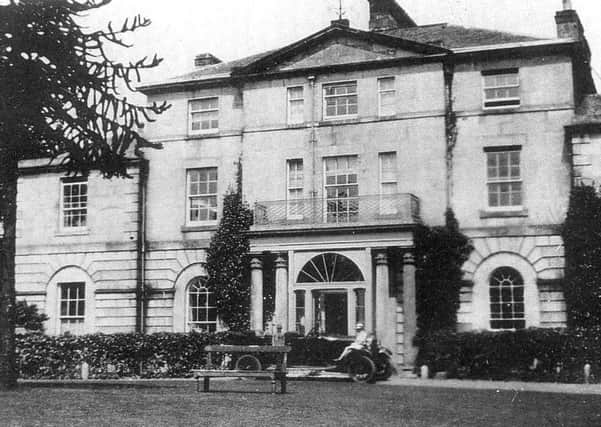The establishment of housing in Woodburn


As the bells chimed in 1934 “The doors of the Corn Exchange were thrown open, and young folks gaily tripped into the spacious building and were soon responding with verve and enthusiasm to the strains of a dance band”, and parties and first-footing began.
New Year’s Day was a holiday, and people took the opportunity to visit friends in other parts of the country. But The Advertiser failed to find anyone who had made the long trip to Inverness to see the latest attraction.
Advertisement
Hide AdAdvertisement
Hide AdThis puzzled me until I read further: “Perhaps some day Dalkeith will have a similar attraction of its own – the phantom bird with black and gold wings to be seen in the High Woods, or the man-eating tiger that smokes a pipe”. The Advertiser clearly didn’t believe in the Loch Ness Monster, first spotted at the end of 1933!
We may not have had such exotic attractions, but anyone could go to the council tip at Wester Cowden which Mr Somerville, the farmer, said was “a living mass of rats”. It was so bad he called in the British Ratting Company, at a cost of 4½ guineas per quarter, to get rid of them. The council kindly agreed to pay half the cost!
Three men were fined 7/6 (37p) for failing to observe the “Drive Left” sign at Eskbank Toll, the precursor of the Eskbank Roundabout.
Another three men appeared in court charged with stealing a quantity of lead, brass and tin from Woodburn House (owned by the Marquis of Lothian), which had been vacant for two years. At the time, Woodburn was not part of Dalkeith; it was part of the Newbattle Abbey Estate.
Advertisement
Hide AdAdvertisement
Hide AdThe Marquis’s estate factor had visited the house on December 27 and all was well. When he returned on January 20, all the piping system had been torn out of the walls and someone had put their foot through some of the ceilings.
One of the accused said that he thought the house was condemned, and said it was so bad he’d “rather live in the High Street than in that house”. It must have been bad, as the High Street was notorious for its slums. The star witness for the prosecution was a Mr X (who I won’t name as his family still live in Dalkeith!) The first thing he said when he appeared in court was that he wanted everyone to know that he hadn’t given the gang away to the police.
He admitted that they had all climbed the rone pipes into the house three times, taken out the pipes and fittings, sold them to a scrappies in Edinburgh and used the money to buy drink and go to the pictures! The accused were all given 60 days in jail but, strangely, no action was taken against Mr X.
There was great interest in the story at the time, probably because people were wondering when Mr X would be found in the Esk wearing a pair of concrete overshoes, but mainly because the Town Council were negotiating with the Marquis to buy the Woodburn Estate.
Advertisement
Hide AdAdvertisement
Hide AdThe council were desperate for land to build new houses to replace the town centre slums. They bought the land in July 1934, paying £5,500 for the 35-acre estate, and plans were drawn up to build 148 houses at a total cost of £44,000. Sounds cheap, but that’s £350,000 and £3 million in today’s money. I’ll explain more about Dalkeith’s housing problems and the Woodburn Estate in later articles.
The first houses were built in Woodburn Road, Woodburn Drive and Spalding Crescent (named after Jeannie Spalding, Dalkeith’s only lady Provost) and occupied in December 1935.
My father joined the Scots Guards in 1938 and my grandparents and uncle moved to 35 Woodburn Drive, where they spent the rest of their lives.